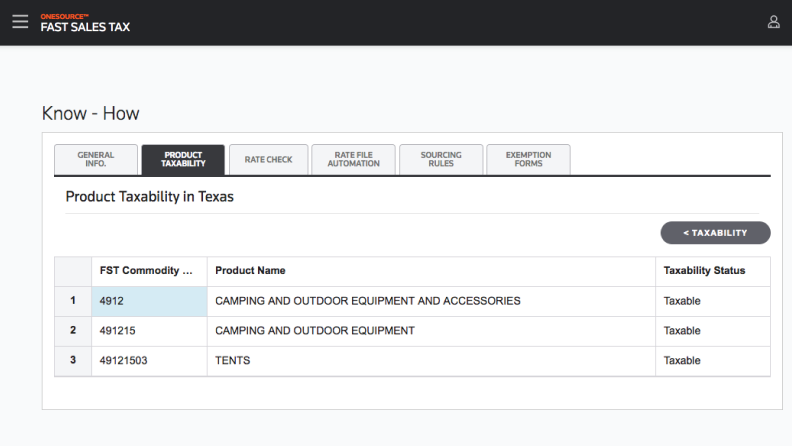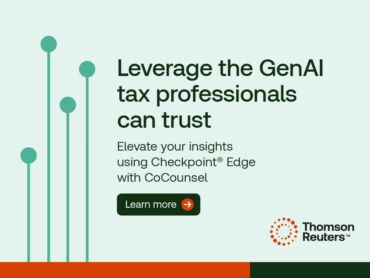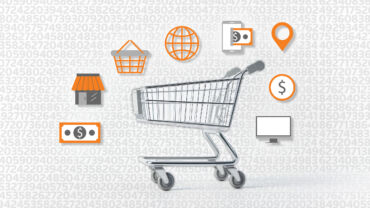4 steps to determine your sales tax.
Jump to:
| 1. Understand economic nexus thresholds |
| 2. Determine your sales tax obligations |
| 3. Stay up to date on sales tax regulations |
| 4. Use tax software to manage complex sales tax obligations in multiple states |
| How sales tax calculation software can help |
Today, companies of all sizes are facing sales tax compliance obligations that are more complex than ever. Under economic nexus rules, a company may need to register, collect sales tax, and file a state sales tax return if it passes a specified threshold, regardless of whether the company has a physical presence in the state.
So how do you determine if you have a sales tax obligation in multiple states?
1. Understand economic nexus thresholds
Many states have adopted the economic nexus threshold used in the 2018 Supreme Court South Dakota v. Wayfair decision: $100,000 in gross receipts or 200 transactions in-state. However, some states have imposed a higher standard, and some have chosen not to use a transaction threshold. Companies that pass a state’s nexus threshold within a set amount of time have to register with the state and begin collecting sales or use tax and filing returns.
Even though many states use the same threshold for determining economic nexus, it is really just a surface-level similarity because states differ in how they actually measure these thresholds. Some use all of a company’s gross receipts; some look just at gross receipts from taxable transactions. Some include sales for resale, while others do not. Some measure on a calendar-year basis, while others use a rolling twelve-month measuring period.
2. Determine your sales tax obligations
Many large companies are already registered and collecting sales tax in every state, so the effect of changing policies is mainly on the procurement side. For procurement, companies must ensure that the sales tax they’re paying on purchases is calculated correctly and that they’re accruing use tax when necessary.
But for companies that are expanding into e-commerce and selling online to all 50 states, these policies have a much bigger impact. For these companies, sales tax compliance obligations could change from filing returns in one or two states to filing 40+ different state returns, in addition to monitoring rules and rates in potentially thousands of local jurisdictions.
As a result, companies need to be think about where their customers are located rather than where their business assets are located. The last thing any company wants is for sales tax complexity to limit their ability to enter new markets by selling products and services online.
Sales tax automation software can help you understand and determine if you have exceeded any nexus thresholds and what your sales tax obligations are.
3. Stay up to date on sales tax regulations
Apart from looking at where customers are located and where your company has nexus, what your company is selling can also impact how complex your sales tax obligation will be.
Most of our sales tax laws grew out of a framework of manufacturing and selling tangible personal property at retail, making it a struggle to keep up with the digital economy
Companies that sell digital goods and services, especially if they bundle different types of products and services together, will confront challenging questions around taxability. In states that measure nexus thresholds based on taxable transactions, taxability decisions could affect nexus as well.
States have also been aggressively pursuing marketplace facilitator policies, under which digital marketplaces like Amazon or eBay are responsible for collecting tax on third-party sales facilitated through their platforms. These are new policies that are still being worked out, and there are a lot of open questions. Sales tax obligations for multi-channel sellers and marketplace facilitators can get complex quite quickly and are rapidly changing.
To stay up to date, explore our resource hub for indirect tax insights and consider implementing a tax and accounting research tool to ensure you’re following the latest legislation.
4. Use tax software to manage complex sales tax obligations in multiple states
Corporate sales tax departments must keep track of where they have an obligation to collect sales tax and if a marketplace facilitator might be collecting on their behalf. Additionally, they should track product taxability, transaction records, customer exemption certificates, and any additional filing or documentation requirements to ensure that a marketplace facilitator is not over or under-collecting tax.
Companies also need to ensure that they can support these tax collection and reporting decisions potentially years later. Clearly, that’s a lot to keep track of, which is why tax software can help simplify your indirect tax calculations.
How sales tax calculation software can help
If you are a corporate tax professional dealing with indirect taxes such as sales tax, use tax, VAT, and GST, ONESOURCE global tax calculation software can help you successfully manage complex sales tax obligations in multiple states.
And if you are a company with multi-state sales tax obligations and want to learn how to make a business case for sales tax automation, check out our webinar, Simplifying Sales Tax Complexity: Making the Business Case for Automation.
SoftwareIdentify product taxability and sales and use tax rates in ONESOURCE Fast Sales Tax. |
 |













